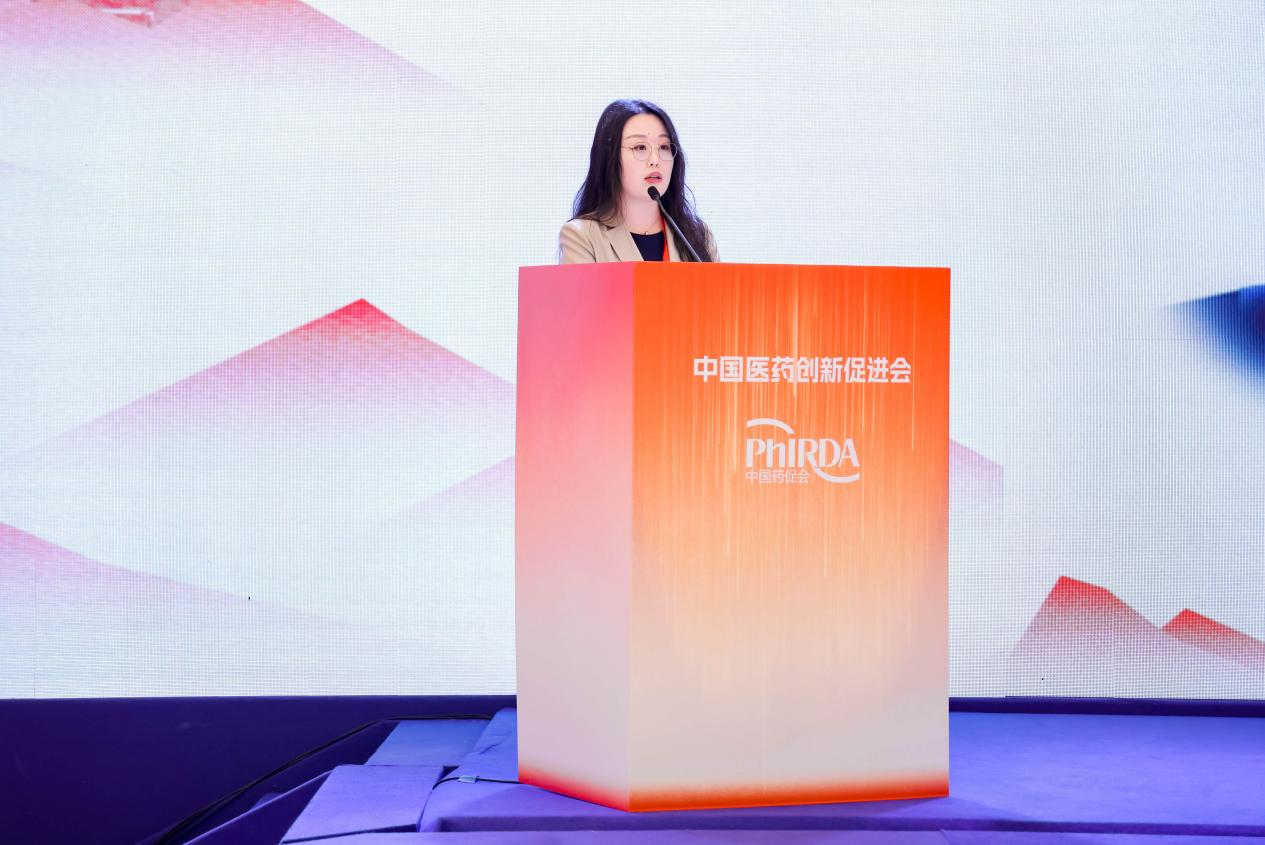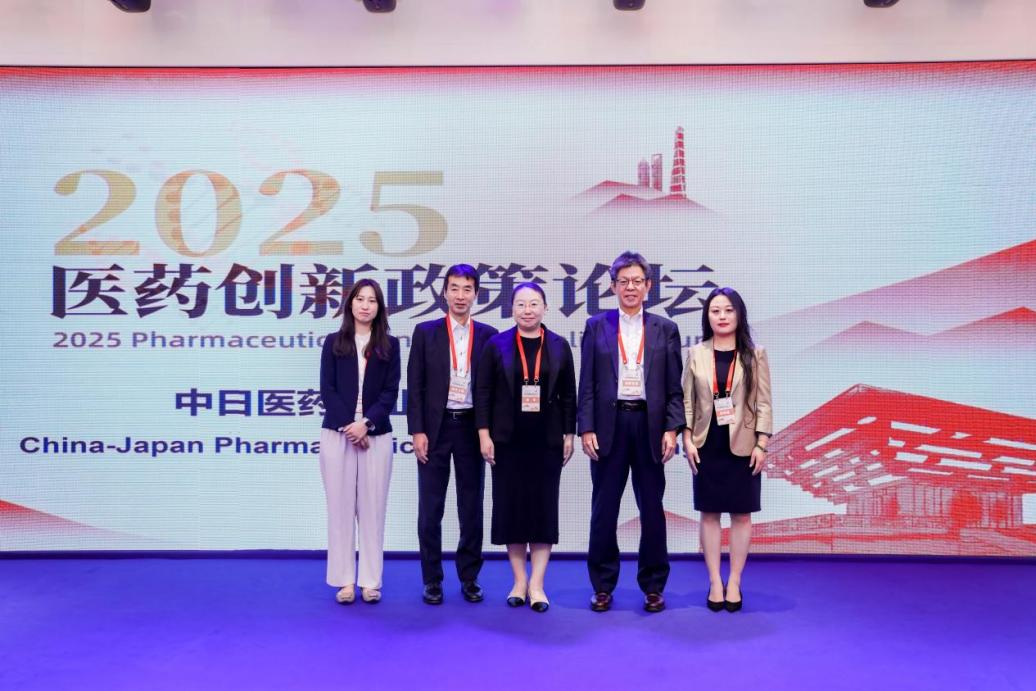 News & Events
News & Events
 2025.06.09
2025.06.09
 416
416
In recent years, China and Japan have seen increasingly frequent interactions in pharmaceutical innovation, regulatory policy, and clinical research. Industrial collaboration between the two countries continues to deepen, featuring diverse, pragmatic, and productive forms of cooperation. Leveraging multilateral platforms and bilateral cooperation mechanisms, both sides are working together to build a forward-looking framework for pharmaceutical innovation collaboration.
To further promote substantial and in-depth cooperation in the pharmaceutical field, the China-Japan Pharmaceutical Industry Meeting was successfully held in Shanghai on May 24, 2025. The event was hosted by the China Pharmaceutical Innovation and Research Development Association (PhIRDA). During the meeting, experts and industry representatives from both countries engaged in in-depth discussions on topics such as fostering innovation collaboration, aligning policies, and exploring future cooperation opportunities. These exchanges injected fresh momentum into the industrial synergy between China and Japan and promoted the development of the regional pharmaceutical industry.
Ms. Xiaoti Lu, Deputy Secretary-General of PhIRDA, moderated the meeting. She noted that China-Japan pharmaceutical cooperation has continued to expand, evolving from traditional models such as technology transfer and product licensing to encompass joint R&D, two-way licensing, and capital investment—with especially active activity in business development (BD) transactions. She emphasized the high complementarity between the two pharmaceutical industries and the significant potential in areas such as new drug R&D, regulatory review, and clinical research. With more Chinese biopharma companies accelerating their global expansion, Japan has become a key strategic market. She added that through the dual drivers of industrial growth and policy support, China-Japan cooperation can not only enhance regional innovation capacity but also foster a more efficient, equitable, and sustainable pharmaceutical innovation ecosystem. She expressed hope that the exchange meeting would deepen bilateral dialogue in pharmaceutical policy, regulatory mechanisms, drug pricing, and international registration, offering strong support and valuable reference for Chinese enterprises entering the Japanese market.

Ms. Xiaoti Lu moderated the meeting
Mr. Tetsuo Takano, Editor-in-Chief for Drug R&D Expert, President and CEO of t2T Healthcare, delivered a keynote speech analyzing the Current Status of Pharmaceutical Regulations and Clinical Development in Japan for Chinese Companies: Government-Industry-Academia Collaboration to Eliminate Drug Loss & Drug Lag. Mr. Takano outlined several regulatory reforms introduced by Japan’s Ministry of Health, Labour and Welfare (MHLW), including relaxed pharmacokinetics (PK) data requirements for Japanese subjects in international multi-regional clinical trials (MRCTs), allowance of English-language documents for New Drug Applications (NDAs), and revised criteria for orphan drug designation—whose approvals have notably increased since 2022. He believes that as Japan continues to align with global practices in rare disease drug development and international clinical trials, Chinese companies can explore cooperation in joint development and cross-border registration, leveraging their R&D capabilities and cost advantages.

Mr. Tetsuo Takano delivered the keynote speech
Mr. Kusabiraki Yoshitaka, Chair, Industry Development Sub Committee, Pharmaceutical Industrial Policy Committee, Japan Pharmaceutical Manufacturers Association (JPMA), gave a keynote address on Japan's Drug Pricing Mechanism and Relevant Policies. He noted that Japan has faced challenges in introducing new drugs, with some innovations already approved in Europe and the U.S. failing to enter the Japanese market in a timely manner due to pricing and market expectations. In response, the Japanese government is actively promoting policy reforms aimed at improving regulatory efficiency and accelerating drug launches while incentive’s innovation. Mr. Kusabiraki detailed Japan’s universal health insurance system, patient co-payment structures, and high-cost reimbursement mechanisms, stressing the importance of sustainability amid a rapidly aging population. On pricing, he explained the two main methods—comparable efficacy pricing and cost-based pricing—and discussed premium evaluations based on factors such as efficacy, safety, unmet medical needs, and innovation. He also addressed post-market price revision mechanisms and controls for products with abnormal sales growth. Japan is now moving toward more flexible pricing strategies, such as fast-track launch premiums and international price-based adjustments, to invigorate the market and improve new drug access. He concluded by emphasizing the need for enhanced collaboration between government and industry to strike a balance between patient benefit and high-quality industrial development.

Mr. Kusabiraki Yoshitaka delivered the keynote speech
Dr. Hua Jiang, Chairlady and CEO of Boan Biotech, shared the company’s experience in regulatory submission and clinical development in the Japanese market. As a Hong Kong-listed subsidiary of Luye Pharma Group focused on biopharmaceuticals, Boan Biotech has built a globally-oriented R&D and regulatory system. Dr. Jiang specifically introduced the development of the denosumab biosimilar (BA6101/1102) in Japan, which is currently the only Chinese biosimilar project involving Japanese partners in an international multicenter trial, covering indications in osteoporosis and bone metastasis from cancer. Japan’s strong market potential in orthopedics and endocrinology, along with its robust patent protection mechanisms, make it a key part of Boan’s global strategy. The project has successfully completed patient enrollment despite challenges arising from differing clinical standards across countries and is expected to file for marketing approval in the U.S., EU, and Japan simultaneously next year. Dr. Jiang called on enterprises to stay attuned to global regulatory trends, develop scientifically sound cross-border registration strategies, engage proactively with regulatory authorities, and continuously enhance international competitiveness.

Dr. Hua Jiang delivered the keynote speech
The China-Japan Pharmaceutical Industry Meeting fully demonstrated the mutual value and collaboration potential at the institutional, policy, and operational levels. Going forward, PhIRDA will continue to serve as a bridge and platform, promoting deeper bilateral cooperation in pharmaceutical industry development, regulatory policy, and scientific innovation. Together, both countries aim to foster a more open, inclusive, and collaborative pharmaceutical innovation ecosystem across Asia.

Group Photo

 News & Events
News & Events
 PHIRDA
PHIRDA  2025-07-24
2025-07-24
 361
361

 News & Events
News & Events
 PHIRDA
PHIRDA  2025-07-09
2025-07-09
 268
268

 News & Events
News & Events
 2025-06-09
2025-06-09
 416
416